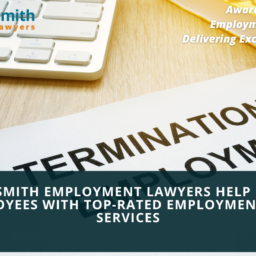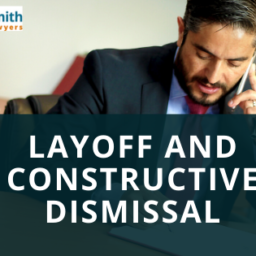Workplace Harassment & Constructive Dismissal LAWYERS in CALGARY
 Workplace harassment in Canada is high. Nearly 20% of Canadian employees reported experiencing harassment in the workplace in 2018. Fortunately, Alberta has implemented strict anti-bullying employment legislation.
Workplace harassment in Canada is high. Nearly 20% of Canadian employees reported experiencing harassment in the workplace in 2018. Fortunately, Alberta has implemented strict anti-bullying employment legislation.
The effects of workplace harassment on individuals and businesses are harmful and far-reaching. In addition to health struggles, bullying in the workplace can cause a decrease in productivity, an unstable work environment, and a poor reputation for the company. Employers could face lawsuits.
It’s important for employers to understand workplace harassment and the potential for constructive dismissal charges. And employees must know their rights.
What Does Workplace Harassment Look Like?
Bullying or harassment are broadly defined as a pattern of ongoing negative behavior targeting a specific person or group. It can happen in various forms including verbal abuse, emotional manipulation, or physical contact. This behavior is typically intended to humiliate, degrade, isolate, intimidate, or offend someone.
For more details on workplace harassment including what to do about bullying in the workplace, see 10 Things You Need to Know About Workplace Bullying & Harassment at Work.
How Constructive Dismissal Can Apply to Workplace Harassment
Constructive dismissal typically occurs in one of two scenarios:
- The employer unilaterally changes the terms and conditions of the employment contract, or
- The employee is forced to quit due to a toxic, hostile, or unsafe work environment.
Constructive dismissal cases can be complicated. If you’re an employee who is a victim of workplace harassment, we encourage you not to quit your job before consulting an employment lawyer.
If you’ve already quit your job, consult with us to help you determine if you have a constructive dismissal case and how to proceed. The law requires an employee to be able to clearly establish that a constructive dismissal has occurred. Our experienced lawyers can help you fulfill the legal requirements.
A Canadian Case of Workplace Harassment & Constructive Dismissal
A case from 2013 is a good reference for workplace harassment and constructive dismissal in Canada. The situation began with Johnson, a man who alleged that he had been constructively dismissed because of workplace harassment. The judge (Honourable Justice Alfred J. Stong) found that the workplace (GM) was in fact a toxic work environment for Johnson and awarded him damages of almost $160,000.
In the General Motors of Canada Limited v. Johnson, 2013 ONCA 502 case, GM appealed Justice Stong’s ruling. The judge for the appeal (Honourable Justice Cronk) declared that although there was “no reason to question that Johnson genuinely believed that he had been the victim of racism in his workplace”, there was not enough evidence to support the original trial’s findings. This meant the constructive dismissal charges no longer held.
The Law’s Requirement for Evidence
If it was clear to the court that Johnson believed he was the victim of a toxic work environment, why was the original ruling overturned? Because the law requires that workplace harassment pass the test of objectivity. It cannot be based solely on an individual’s feelings, beliefs, or their own interpretation of a situation.
To ensure that the workplace harassment is, in fact, unacceptable according to the law, there must be evidence that would convince an objective, reasonable bystander to support the claim.
Implications for Constructive Dismissal
Johnson had refused to return to GM after what he believed was an attempt by GM to bully him into returning to that hostile workplace. Justice Cronk stated that “Johnson did not have the right to dictate where he would work or the employment role he would assume on his return to work”.
That statement has noteworthy implications for constructive dismissal decisions. When an employee feels they cannot return to a hostile work environment, naturally, it would seem their only option is to quit and claim constructive dismissal damages. However, according to Justice Cronk’s statement, a constructive dismissal claim will fail without objectively reasonable proof or the workplace harassment to satisfy the court.
What Does This Mean for You?
For employers, claims of workplace harassment and constructive dismissal are serious. You do not want to be found guilty of such allegations. The General Motors of Canada Limited v. Johnson, 2013 ONCA 502 case demonstrates the value of diligence in investigating employee complaints. It’s worthwhile to take the time to fully understand human rights and employment legislation before a situation like this arises.
For employees, this case is an unfortunate example of the costly consequences of taking action before seeking the advice of a lawyer. No matter how justified you may feel, winning a legal claim demands that you be able to meet the requirements determined by law to substantiate that claim.
If you’re working in a toxic work environment, carefully keep records of each incident. Your first course of action is to report workplace harassment to your HR department. This could lead to resolution. If not, you may have grounds to file a complaint with the Alberta Human Rights Commission.
However, if you’re unable to take either of those actions, you may choose to quit your job and file a legal claim against your employer for constructive dismissal. BEFORE YOU QUIT, speak to an employment lawyer to ensure your resignation would not be interpreted as voluntary and ruin your chance of winning the case.
Constructive Dismissal Consultation
The employment lawyers of Osuji & Smith can help you navigate this stressful situation. Whether you’re an employee stuck in a toxic work environment, or an employer being accused of workplace harassment, our attorneys have the expertise you need to fulfill the requirements of the law and make sure your rights are upheld.





